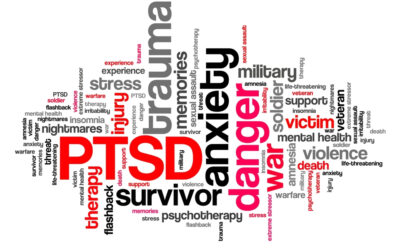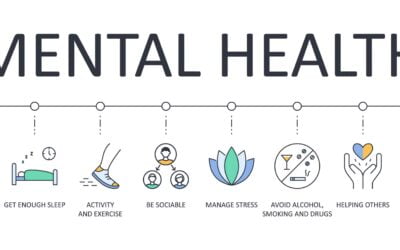Statistics by the CDC show that over 1 in 5 American adults struggle with a mental health disorder, which equals over 57 million people. And that’s just the number of adults who meet the criteria for a disorder. Mental health among adolescents continues to worsen as surveys show that more than 4 in 10 students feel persistently sad. This is despite the increasing number of people taking medication for their mental health.
Evidence proves that taking care of your body helps you feel better. This points to a mind-body connection, and it’s why practitioners are adopting an integrative approach to mental health treatment. Let’s discuss the mind-body connection and different practices that can improve emotional well-being.
What is Holistic Therapy?
The holistic approach involves treating the whole person and not just their mental health struggles. Therapists who employ a holistic or integrative approach also consider clients’ physical, emotional, and spiritual well-being.
Therefore, every person’s experience with mental illness, as well as potential recovery, is influenced by factors like their physical health, gender, age, culture, and beliefs. Based on this approach, any health concerns, whether they affect your mind or body, impact you as a whole. This brings us to the mind-body connection. Today, many mental health practitioners, including dedicated facilities like United Recovery Project Florida, use a holistic approach to address concerns.
What is the Mind-Body Connection?
When you say mind-body connection, it implies that your physical health and emotional health aren’t separate systems. In fact, they’re intertwined in a way that one impacts the other. It refers to the link between your thoughts, feelings, and behaviors and how it affects your physical health.
Take the body’s stress response, for example. Your body releases cortisol and adrenaline when it’s stressed. This is useful when you’re in a dangerous situation, but it can have negative effects when your body continues producing these hormones in the absence of a threat. Also known as chronic stress, it can contribute to a weakened immune response, slow healing, and gastrointestinal issues.
Based on this example, you can address physical health issues by managing stress. Now, take a second to think about the inverse: taking care of your body to improve emotional well-being.
Mind-Body Practices for Emotional Well-being.
These practices tackle stress and subsequent anxiety by encouraging relaxation and mindfulness. The aim is to use your body to affect your mind and vice versa. Some of the most commonly used practices include:
Mindfulness Meditation.
Mindfulness sets the foundation of all mind-body practices because it helps you become aware of your surroundings, bodily sensations, and thoughts. Practicing mindfulness helps you become more accepting of your thoughts and feelings without judging them as ‘right’ or ‘wrong.’ In mindfulness meditation, you combine meditation with mindfulness to focus on the now and accept your feelings and sensations without judgment.
There are different ways to practice mindfulness meditation, which includes seated or walking meditation. Core aspects include deep breathing and noticing your thoughts without ruminating, suppressing, or ignoring them. In walking meditation, you’ll take a minute to focus on things like your surroundings, bodily sensations, and walking pace.
Therapeutic Massage.
Massage therapy is a mind-body practice that offers both physical and emotional benefits. It alleviates stress levels by regulating cortisol, the stress hormone that plays a role in the body’s fight-or-flight response. It also increases concentrations of important neurotransmitters such as serotonin and dopamine, which help improve your mood.
Art Therapy.
In art therapy, you use different mediums to access, express, and interpret your thoughts. It’s a method of holistic therapy that’s highly beneficial for people who struggle to express emotions through talk therapy. Art therapy focuses on creative expression rather than delivering a specific type of artwork. Therapists use it as a form of non-verbal communication that facilitates the expression of both conscious and unconscious thoughts. It’s considered a mind-body practice because you use your hands to create something that expresses how you feel.
Journaling.
Just as art therapy allows you to express your feelings, journaling deepens self-awareness. By putting your thoughts on paper, you can identify patterns, determine triggers, organize your thoughts, and find solutions. By writing down your experiences and how they made you feel, you become mindful of your emotions and get an opportunity for catharsis. By reflecting on your experiences and understanding your emotions, you’re better equipped to cope with stressful situations and regulate your emotions.
Movement Therapy.
In dance or movement therapy, you use different movements to externalize your inner feelings. You’ll work with your therapist to learn which movement patterns result in stress-related problems and reeducate them. It’s part of the holistic approach and is based on the belief that your mind, body, and spirit are interconnected. The movements are often postural and gestural, so they don’t always align with the typical definition of ‘dance.’ Movement therapy is based on the concept of mind-body connection because it integrates individualized movements for emotional, physical, cognitive, and social well-being.
Yoga.
No list of beneficial mind-body practices is complete without yoga. It’s one of the oldest forms of mind-body fitness that combines muscular activity while focusing on your breathing, bodily sensations, and surroundings. By maintaining different poses while focusing on your breathing, you become more mindful of your mental state and any physical sensations. As a result, you’ll be focusing on the present moment to the fullest.
Bottom Line.
To summarize, there are several mind-body practices that use your body to improve your emotional well-being. These practices are part of an integrative approach that focuses on treating the whole person and not just their mental health issues. Commonly used practices include mindfulness meditation, art therapy, movement therapy, and therapeutic massage. The purpose of these techniques, besides improving your sense of well-being, is to strengthen your mind-body connection. As a result, you build awareness of how your thoughts impact your body and vice versa.

 Workout
Workout
 Meditation
Meditation


 Stories
Stories


 Podcast
Podcast E-book
E-book















